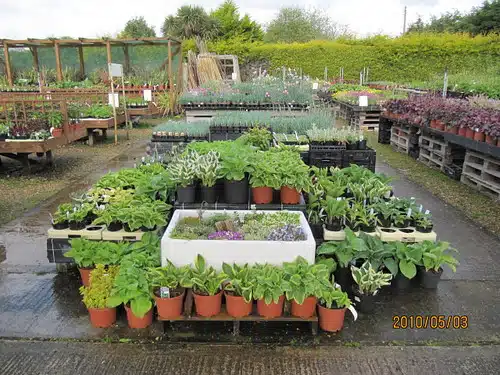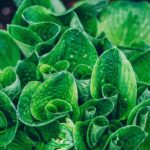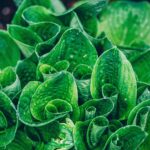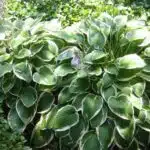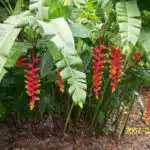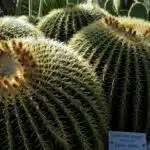Hosta, commonly known as Plantain Lily, is a perennial that is highly valued for its lush foliage and attractive flowers. It is a popular garden plant that is often grown outdoors in shady areas. However, growing Hosta indoors is also possible with the right conditions and care. Indoor cultivation of Hosta offers the advantage of being able to enjoy this beautiful plant year-round, regardless of weather conditions or seasonal changes.
Growing Hosta indoors requires attention to several key factors such as lighting, soil quality, and temperature control. In this article, we will explore the steps necessary for successfully cultivating Hosta indoors. Whether you are an experienced indoor gardener or new to the world of houseplants, these tips will help you achieve healthy and thriving Hosta plants that will be sure to impress your guests and bring cheer to your home.
Understanding Hosta Plant Characteristics
Growing hosta (plantain lily) indoors can be a rewarding experience for plant enthusiasts. Hosta plants are known for their lush foliage and delicate flowers, making them a popular choice for indoor cultivation. However, before embarking on this journey, it’s essential to understand the hosta plant characteristics to ensure successful growth.
Hosta plants are perennial plants that belong to the family Asparagaceae. They are native to Japan and Korea but have become popular garden plants around the world due to their aesthetic appeal. Hostas have a unique growing habit – they grow in clumps from underground rhizomes or tubers. This characteristic makes them an ideal choice for growing in containers as they can adapt well to limited space.
When it comes to growing hosta in containers, it’s crucial to select a variety that is suitable for indoor cultivation. Choosing the right hosta variety requires an understanding of its growth habits, leaf size, color, and overall size. With over 3000 registered cultivars available worldwide, there is a range of options available for indoor cultivation.
Understanding hosta plant characteristics is crucial when it comes to growing them indoors successfully. From their growing habits to their unique foliage patterns, these plants require specific care and attention to thrive indoors. In the subsequent section, we will explore how to choose the right hosta variety for your indoor garden and provide tips on caring for these beautiful plants.
Choosing The Right Hosta Variety For Indoor Cultivation
The hosta, also known as the plantain lily, is a popular choice for indoor gardening enthusiasts. When selecting the best hosta varieties for indoor cultivation, it is essential to consider their size and growth habits. Hostas come in a variety of sizes, from miniature to giant varieties. The miniature hostas are perfect for small containers and terrariums, while the larger ones require more space to grow.
Another factor to consider when selecting hosta varieties is the color and texture of their foliage. Some hostas have variegated leaves with white or yellow edges that add an exciting contrast to any indoor garden. Others have blue-green or dark green leaves that provide a calming effect in any room. It’s important to note that some hostas may require more sunlight than others, so it’s essential to research each variety before making a purchase.
Indoor Hosta Care Tips
Once you’ve selected the best hosta varieties for your indoor garden, it’s time to start caring for them properly. Hostas thrive in well-draining soil that retains moisture but doesn’t become waterlogged. It’s crucial to avoid overwatering your plants as this can lead to root rot and other diseases.
In addition to well-draining soil, indoor hostas need plenty of indirect light and moderate temperatures between 60-75°F (15-24°C). During the winter months, it’s essential to protect your plants from cold drafts by keeping them away from windows or doors. Regular fertilization with balanced plant food will help promote healthy growth and vibrant foliage.
Transition Sentence: Now that you know which hosta varieties are best suited for indoor cultivation and how to care for them properly let’s move onto preparing the right soil mix for hostas.
Preparing The Right Soil Mix For Hosta
Have you ever wondered what the secret to growing beautiful hostas indoors is? Well, wonder no more! One crucial aspect of indoor hosta cultivation is having the right soil mix. Hostas thrive in well-draining soil that is rich in organic matter. Therefore, it’s essential to amend your soil mix with some organic matter like compost, peat moss, or worm castings to provide the necessary nutrients.
Another important factor to consider when preparing your soil mix is the pH level. Hostas prefer slightly acidic soil with a pH range of 6.0-7.5. You can adjust your soil pH by adding lime to make it more alkaline or sulfur to make it more acidic, depending on your needs. Soil pH affects nutrient availability, so getting it right can lead to healthier plants and better growth.
To prepare a suitable soil mix for indoor hosta cultivation, you should blend equal parts of perlite, peat moss, and vermiculite for optimal drainage and moisture retention. Don’t forget to add an organic fertilizer during the mixing process as well! By amending your soil mix and adjusting its pH level accordingly, you’re setting yourself up for success in growing healthy and thriving indoor hostas.
Now that we’ve covered how to prepare the right soil mix for hostas let’s move on to selecting the right container for indoor hosta plants. The container you choose will affect your plant’s growth rate as well as its overall health and appearance. Stay tuned for our next section on how to choose the perfect pot size and material for your indoor hosta plants!
Selecting The Right Container For Indoor Hosta Plants
Choosing the right size, drainage, and material for indoor hosta containers is crucial in ensuring their growth and health. Hostas prefer shallow pots that are wider than they are deep because their roots spread horizontally rather than vertically. Generally, a container with a diameter of 12-14 inches is ideal for growing hostas indoors. It is also essential to make sure that the container has adequate drainage holes to prevent waterlogging, which can cause root rot.
The material of the container also matters as it affects the plant’s growth and development. Plastic and ceramic containers are commonly used for indoor hostas because they retain moisture and keep the soil cool. However, terracotta pots are also suitable options as they allow air to circulate around the roots and help regulate soil temperature. When selecting a potting mix, make sure it is well-draining but still retains moisture to provide a healthy growing environment.
Decorating hosta containers for a stylish indoor display can be an enjoyable activity that adds to your home’s aesthetic appeal. Decorative pots can be found in various shapes, sizes, and colors that complement your home decor or personal style. To add some personality to your hosta container, consider painting it or adding decorative stones or other embellishments. However, ensure that any decorations you use do not harm your plant’s growth or interfere with its drainage.
As important as choosing the right container is ensuring optimal lighting conditions for hosta indoors. The amount of light exposure influences how quickly the plant grows and how vibrant its foliage appears. Inadequate light will lead to slow growth and pale leaves while too much direct sunlight will scorch leaves or cause them to wilt. The next section discusses optimal lighting conditions for hosta indoors in more detail.
Optimal Lighting Conditions For Hosta Indoors
The optimal lighting conditions for indoor hosta growth are crucial in ensuring their healthy development. One of the best ways to provide adequate light is by using the best grow lights available in the market. These lights come in various types, including LED, fluorescent, and incandescent bulbs. However, LED grow lights are more efficient than other options as they produce less heat and emit a wider spectrum of light that plants need for photosynthesis.
The duration of light exposure per day is another critical factor to consider when growing hosta indoors. Generally, these plants require at least 12 to 16 hours of light daily to thrive correctly. It’s vital to provide them with consistent light exposure during this period and avoid interrupting their natural cycle with sudden changes in lighting conditions.
Maximizing natural light for hosta growth indoors can also be beneficial if done correctly. To achieve this, ensure your indoor plants receive sufficient indirect sunlight from a window or door facing east or west. You must adjust the distance between the plant and the light source accordingly, depending on how much natural light it receives.
Using LED grow lights for hosta growth indoors can help you mimic natural sunlight conditions better. The recommended distance between the plant canopy and LED grow lights should not exceed 18 inches to prevent burning or drying out of leaves. Additionally, some LED grow lights come with adjustable dimmer switches that allow you to control the intensity of light required by your hosta plants at different stages of their growth cycle.
To maintain proper humidity for indoor hosta after addressing their lighting needs, ensure they are positioned away from heating or cooling appliances that may cause fluctuations in humidity levels within your home environment. In addition, consider placing a humidifier near your plant’s location and watering them regularly as dry soil may lead to decreased humidity levels around them.
Maintaining Proper Humidity For Indoor Hosta
After discussing optimal lighting conditions for indoor hosta plants, it’s ironic that we must now talk about humidity control. Hostas are known for their love of moisture, so it’s no surprise that they thrive in humid environments. However, too much moisture can lead to root rot and fungal diseases. Therefore, maintaining proper humidity levels is crucial to the health of your indoor hosta.
One effective technique for moisture retention in the air is to use a humidifier. This device releases water vapor into the air and helps to maintain optimal humidity levels for your hosta plant. Alternatively, you can place a tray filled with pebbles and water under your hosta pot. As the water evaporates from the tray, it will increase the humidity level around your plant.
Another important factor in humidity control is proper watering techniques. Overwatering or underwatering your hosta plant can both lead to issues with humidity levels. It’s essential to ensure that your soil remains moist but not waterlogged. A helpful way to check if your plant needs watering is by sticking your finger an inch deep into the soil – if it feels dry, then it’s time to water.
Moving on from maintaining proper humidity levels for indoor hosta plants, let’s discuss techniques for watering these plants effectively while avoiding overwatering or underwatering them.
Watering Hosta Plants Indoors
Proper watering is crucial for the growth and survival of hosta plants when grown indoors. Overwatering can lead to root rot, while underwatering can cause leaves to wilt and turn yellow. One solution is to use self-watering systems that provide a consistent level of moisture without the risk of overwatering or underwatering.
When using self-watering systems, it’s important to keep the water reservoir full and monitor the soil moisture levels regularly. Hosta plants typically require watering once a week during the growing season, but this may vary depending on factors such as humidity, temperature, and soil type. To determine whether your hosta plant needs watering, insert your finger into the soil up to your second knuckle. If it feels dry, it’s time to water.
In addition to regular watering, it’s essential to maintain proper drainage in the container or pot where your hosta plant is growing. Ensure that there are enough drainage holes at the bottom of the container and avoid using saucers that can collect excess water. By following these tips for watering hosta plants indoors, you can help promote healthy growth and prevent common problems such as root rot or wilting leaves.
For optimal growth, fertilizing hosta plants is also crucial. In the next section, we will discuss how to choose the right fertilizer for your hostas and when to apply it for best results.
Fertilizing Hosta Plants For Optimal Growth
Ensuring optimal growth of indoor hosta plants requires proper fertilization. Fertilizers provide essential nutrients that the plants need to thrive. Gardeners have two options when it comes to choosing fertilizers: organic or synthetic.
Organic fertilizers are derived from natural sources and are ideal for gardeners who prefer eco-friendly options. These fertilizers release nutrients slowly over time, which ensures that the plant gets a steady supply of nutrients. They also help improve soil structure and promote beneficial microbial activity. Examples of organic fertilizers include compost, manure, bone meal, and fish emulsion.
On the other hand, synthetic fertilizers are made from chemical compounds and are ideal for gardeners who want quick results. These fertilizers release nutrients quickly, which can lead to rapid growth in plants. However, they can also cause damage to the soil if used excessively. It is important to follow manufacturer’s instructions when using synthetic fertilizers to avoid over-fertilization, which can harm the plant. Ultimately, both organic and synthetic fertilizers can be used on indoor hosta plants depending on personal preference and desired outcomes.
To ensure optimal growth of indoor hosta plants, it is important to fertilize regularly during the growing season. The frequency of fertilizer application depends on various factors such as soil quality, potting mix composition, light intensity, and temperature conditions in your home environment. Generally speaking, it is recommended to apply fertilizer every 4-6 weeks during active growth periods (spring through summer) and reduce frequency during dormancy (fall through winter). Remember not to over-fertilize as this can lead to root burn or leaf scorching.
Managing pests and diseases in indoor hosta plants requires proactive measures that prevent infestations and minimize damage caused by pathogens or insect pests.
Managing Pests And Diseases In Indoor Hosta Plants
One of the biggest challenges in growing hosta plants indoors is managing pests and diseases. The most common pests that infest indoor hostas are spider mites, mealybugs, and scale insects. These pests can cause significant damage to the plant if not addressed promptly. To prevent infestations, it is essential to keep your indoor environment clean and free from debris. You should also inspect your plant regularly for any signs of pest infestation.
If you notice any pests on your indoor hosta plants, there are several natural remedies you can use to eliminate them. One effective method is to spray the plant with a mixture of water and dish soap. This solution will help suffocate the pests and prevent them from spreading. You can also try using neem oil or insecticidal soap as a more potent treatment option. It is essential to follow the instructions carefully when using these remedies to avoid damaging the plant.
In addition to pest management, preventing diseases in indoor hosta plants is crucial for their overall health and longevity. Some common diseases that affect hostas include crown rot, leaf spot, and powdery mildew. To reduce the risk of disease, you should avoid over-watering your plant and always allow excess water to drain away from the roots. Pruning off infected leaves or removing infected plants altogether can also help prevent further spread of disease. Using natural remedies for diseases like apple cider vinegar or chamomile tea can be used as a preventative measure against fungal infections.
As you have learned how to manage pests and diseases in indoor hosta plants effectively, next up is pruning and propagation techniques that will help maintain healthy growth in your plants indoors without occupying too much space!
Pruning And Propagation Of Hosta Plants Indoors
Now that we have discussed the different pests and diseases that can affect indoor hosta plants, let us move on to pruning techniques and propagation methods. Pruning is an essential part of maintaining healthy hosta plants. It involves removing dead or damaged leaves, stems, and flowers. This practice not only keeps the plant looking neat and tidy but also promotes new growth.
When it comes to pruning hosta plants, timing is crucial. The best time to prune is in early spring before new growth appears. This allows you to remove any damaged or diseased parts before they spread to healthy areas. To prune, use a sharp pair of scissors or shears and make cuts close to where the stem meets the base of the plant. Avoid cutting into the crown as this can damage it.
Propagation is another way to grow your collection of hosta plants indoors. There are two main methods: division and seed sowing. Division involves separating clumps of mature plants into smaller sections with roots attached. This method should be done in early spring or fall when the plant is dormant. Seed sowing requires more patience as it takes longer for the plants to mature, but it can be a rewarding experience for those who enjoy watching their plants grow from scratch.
In summary, pruning and propagation are important practices for growing healthy indoor hosta plants. By using proper techniques for pruning and selecting appropriate methods for propagation, you can ensure your plants will thrive year-round. In the next section, we will discuss overwintering hosta plants indoors and how to prepare your garden for their return in the springtime.
Overwintering Hosta Plants Indoors
Choosing Hosta Varieties: It is important to select hosta varieties that are suited to indoor environments, as some varieties are more prone to disease in warmer, humid conditions.
Creating Ideal Conditions: To create an ideal indoor environment for hostas, it is important to provide them with bright, indirect light, well-draining soil, and a consistent watering schedule.
Choosing Hosta Varieties: Additionally, it is important to choose hosta varieties that are hardy and disease resistant.
Creating Ideal Conditions: Furthermore, it is important to ensure the environment remains cool and not overly humid to prevent the development of fungal diseases.
Choosing Hosta Varieties
When it comes to choosing hosta varieties for overwintering indoors, there are a few popular cultivars that stand out. One of the most well-known is ‘Halcyon’, with its striking blue-gray foliage that adds a touch of cool elegance to any indoor space. Another great choice is ‘June’, which boasts attractive green and gold foliage that transitions to a stunning cream color as the season progresses. For those looking for a more compact option, ‘Blue Mouse Ears’ is a miniature hosta variety that packs a punch with its small size and charming blue-green leaves.
When selecting hosta varieties for indoor growth, it’s important to also consider the best colors to complement your home decor. If you’re looking for something bold and eye-catching, ‘Sum and Substance’ may be just the ticket with its large chartreuse leaves that create an instant focal point in any room. For those wanting something more subdued, ‘Patriot’ features narrow green leaves with crisp white edges that add just the right amount of interest without overwhelming the space.
Ultimately, choosing the right hosta varieties for indoor growth will depend on personal preference and available space. Whether you prefer show-stopping colors or subtle texture, there’s sure to be a hosta variety that fits your needs perfectly. With proper care and attention, these beautiful plants can thrive indoors all winter long, bringing life and beauty to even the dreariest of spaces.
Creating Ideal Conditions
Optimizing temperature and controlling air circulation are crucial factors in overwintering hosta plants indoors. Hostas prefer cool temperatures ranging from 40-50°F (4-10°C), which mimic their natural dormancy period during winter. Therefore, it is important to keep them away from heat sources such as radiators or direct sunlight that can cause the soil to dry out quickly and damage the leaves. A consistent temperature is also essential to prevent drafts or abrupt changes that can cause shock to the plants.
Air circulation is another key factor in maintaining healthy hosta plants indoors. It helps prevent fungal diseases and pests that thrive in stagnant air environments. However, too much air movement can also dry out the soil too quickly and harm the leaves’ delicate texture. To control air circulation, place hostas in an area with a gentle breeze or use a fan on low speed for short periods of time. This will ensure adequate airflow without causing damage to the plant.
In conclusion, creating ideal conditions for overwintering hosta plants requires optimizing temperature and controlling air circulation. By providing cool temperatures between 40-50°F (4-10°C) and gentle airflow, hostas can thrive indoors throughout the winter season. Remember to keep them away from heat sources and avoid sudden changes in temperature or drafts that can harm the plant’s health. With proper care, these beautiful plants can continue to bring life and beauty to indoor spaces all winter long.
Troubleshooting Common Issues With Indoor Hosta Plants
As much as we want our indoor hosta plants to thrive, they are not immune to common pests and nutrient deficiencies. One of the most common pests that affect hostas is spider mites. These tiny critters are known for causing yellowing leaves, stunted growth, and webbing on the plant’s surface. To prevent spider mites from taking over your indoor hosta plants, ensure you keep their environment humid by misting them frequently. Additionally, you can use insecticidal soap or neem oil to treat any infestation.
On the other hand, nutrient deficiencies can cause various problems with indoor hosta plants. For instance, a nitrogen deficiency may result in yellowing of the leaves while a lack of calcium may lead to brown spots on the foliage. To avoid these issues, it’s essential to provide your indoor hosta plants with balanced fertilizers regularly. Also, ensure that you’re using well-draining soil and only watering when necessary.
In conclusion, pest control and proper nutrition are crucial aspects of growing healthy indoor hosta plants. Keep an eye out for common pests such as spider mites and treat them promptly if detected. Additionally, ensure your plant has all the necessary nutrients by providing balanced fertilizers regularly and using well-draining soil. Taking care of these issues will help keep your indoor hosta plants looking beautiful and flourishing in their environment. Next up is how to decorate your space with these lovely green beauties indoors!
Decorating With Hosta Plants Indoors
Hosta plants, also known as plantain lilies, can be a great addition to any indoor decor. Their lush green foliage and interesting textures make them ideal focal points in any room. When it comes to decorating with hosta plants indoors, there are many creative ways to use them.
One way to incorporate hosta plants into your indoor decor is by using them as centerpieces. Simply place a potted hosta plant on a decorative tray or stand and surround it with other complementary objects such as candles, books, or vases. This creates a visually appealing display that draws the eye towards the hosta plant and adds depth and interest to your space.
Another creative way to use hosta plants in decor is by hanging them from the ceiling. This works particularly well in rooms with high ceilings where you want to add some vertical interest. Use macrame hangers or wire baskets to showcase your hostas in style. You can even mix and match different varieties of hostas for a more eclectic look.
In summary, using hosta plants as focal points and incorporating them into your indoor decor is a great way to add natural beauty and texture to any space. Whether you choose to use them as centerpieces or hang them from the ceiling, there are many creative ways to display these versatile plants that will enhance the overall look of your home or office. In the next section, we will discuss some tips for displaying hosta plants indoors that will help you get the most out of these beautiful plants.
Tips For Displaying Hosta Plants Indoors
- Hosta plants require bright, indirect light when grown indoors to ensure they receive adequate energy for photosynthesis.
- Watering schedules should take into account the size of the pot and the type of soil used; smaller pots will require more frequent watering than larger pots.
- When potting hosta plants, a well-draining potting medium with a pH of 6.5-7.5 is recommended, as this will provide the optimal growing environment.
- When potting hosta plants indoors, it is important to select a pot with good drainage, as too much moisture in the soil can lead to root rot.
- Hosta plants should be fertilized every two weeks during the growing season with a balanced fertilizer to ensure their continued growth.
- To encourage the growth of healthy foliage on hosta plants, it is important to rotate the pot regularly to ensure even light exposure for both sides of the plant.
Lighting
The key to growing healthy hosta plants indoors is proper lighting. Hostas are shade-loving plants that thrive in environments with low to medium light levels. If you want to grow hostas indoors, it is essential to provide them with adequate light sources. Using grow lights can be an effective way of ensuring your hosta plants receive the right amount and quality of light they need. Grow lights come in various types, including fluorescent, LED, and high-pressure sodium (HPS) lights. You should choose the type that suits your needs best based on the size of your indoor space and the number of hostas you want to grow.
Natural light sources can also work well for indoor hosta plants. The ideal location for a hosta plant inside your home is near a north-facing window or any other shaded area where they can receive indirect sunlight. This natural source of light will help promote healthy growth without causing damage from direct heat or UV radiation from the sun.
To ensure optimal growth during different seasons, it’s important to adjust your lighting practices accordingly. During winter, when days are shorter and darker, you may need to supplement your hostas’ natural or artificial light source with additional hours of artificial light each day. Conversely, during summer months when days are longer and brighter, you may need to reduce the amount of time your hostas receive artificial lighting.
By following these best practices for adjusting lighting for indoor hosta plants during different seasons, you’ll provide them with the ideal conditions for growth all year round. Remember that good lighting is just one aspect of successful indoor plant care; humidity levels and watering schedules are also crucial factors to consider when growing happy and healthy houseplants!
Watering
To display healthy and vibrant hosta plants indoors, proper watering practices must be observed. Hostas require consistent moisture levels to thrive, but overwatering can lead to root rot and other plant diseases. To avoid this, it is crucial to establish a regular watering schedule that suits your indoor environment’s conditions.
One way to determine when your hostas need watering is by checking the soil moisture levels. Use a moisture meter or stick your finger into the soil about an inch deep. If the soil feels dry, it’s time for watering. Hostas prefer slightly moist soil, so ensure that the water penetrates evenly throughout the potting mix.
The frequency of watering depends on several factors such as environmental conditions and pot size. Hostas in smaller pots may require more frequent watering than those in larger containers since they dry out faster. However, as with most houseplants, it’s better to underwater than overwater your hostas. By following these tips for watering indoor hosta plants, you’ll provide them with optimal growing conditions and help them thrive all year round!
Potting
When it comes to displaying hosta plants indoors, choosing appropriate pots is essential. The pot’s size must be proportional to the plant’s size, and it should have sufficient drainage holes. Hostas require well-draining soil, so selecting the right potting mix is crucial. A mix consisting of peat moss, perlite or vermiculite, and sand will provide adequate drainage while retaining moisture.
After selecting the appropriate pot and potting mix, it’s time to consider proper drainage. Hostas are susceptible to root rot if they sit in waterlogged soil for too long. To prevent this, ensure that your pot has sufficient drainage holes and a saucer underneath to catch excess water. It’s also essential to dispose of any standing water in the saucer after watering your hostas.
Maintaining a proper watering schedule is vital for hosta plants’ health when grown indoors. Overwatering can lead to root rot and other plant diseases, but underwatering can cause the leaves to wilt and turn brown. To avoid these issues, use a moisture meter or check the soil’s moisture level by sticking your finger about an inch deep into the soil. Water your hostas when the soil feels slightly dry but not completely dry. By following these tips for choosing appropriate pots, selecting suitable potting mix and maintaining proper watering schedules with adequate drainage for indoor hosta plants, you’re on your way to having healthy and vibrant hostas all year round!
Conclusion And Final Thoughts
As you have learned in the previous section, displaying hosta plants indoors can be a beautiful addition to any home. However, it’s important to know how to successfully grow them in order to fully enjoy their benefits. Here are some tips for successful growth of hosta plants indoors.
First, make sure your hosta plant is placed in a location where it can receive adequate sunlight. Hostas prefer partial shade and indirect light, so placing them near a window with sheer curtains or in a well-lit room can provide the optimal environment for growth. Additionally, ensure that the soil is moist but not overly saturated by watering once or twice a week.
Aside from being aesthetically pleasing, there are many benefits to growing hosta plants indoors. Not only do they help purify the air by removing toxins and pollutants, but they also have been known to reduce stress levels and improve overall mood. With proper care and attention, your indoor hosta plant can thrive and provide these benefits for years to come.
| Tips for Successful Growth | Benefits of Growing Hosta Indoors |
|---|---|
| Place in partial shade/indirect light | Purifies air by removing toxins |
| Keep soil moist but not overly saturated | Reduces stress levels |
| Water once or twice a week | Improves overall mood |
By following these tips for successful growth and maximizing the benefits of growing hosta plants indoors, you can create a peaceful oasis in your home that serves as both an attractive decoration and natural air purifier. With proper care and attention, your indoor hosta plant will flourish and bring joy to all those who admire its beauty.
Frequently Asked Questions
How Often Do I Need To Repot My Indoor Hosta Plant?
Knowing when to repot indoor hostas is crucial for maintaining their health and promoting their growth. Signs of a root-bound plant include slow growth, yellowing leaves, and soil that dries out quickly after watering. The best time to repot is in the spring when new growth begins to emerge. When selecting a potting mix for indoor hostas, choose one that is well-draining and rich in organic matter. A homemade potting mix can be made by combining equal parts peat moss, perlite, and vermiculite. It’s important not to overwater newly repotted plants and to allow them time to adjust to their new pot before fertilizing. By following these guidelines, your indoor hostas will thrive in their new potting mix and continue to beautify your home with their lush foliage.
Can I Grow Hosta From Seeds Indoors?
It is a well-known fact that growing hosta from seeds indoors is a challenging task. Choosing the right soil mix for indoor hosta growth is crucial as it can affect the plant’s overall health and growth. Horticulturalists and indoor plant specialists recommend using a soil mix that has good drainage properties and contains organic matter to enhance nutrient availability. While it may seem like an exciting venture to grow hosta from seeds, it requires patience, dedication, and attention to detail. It is essential to provide adequate light, water, and nutrients for the seedlings to thrive. Despite the challenges, cultivating hosta from seeds indoors can be a rewarding experience for those who have a deep love for plants and serving others through their beauty.
Can I Use Tap Water To Water My Indoor Hosta Plant?
The quality of tap water used to water indoor hosta plants can vary depending on the location and source. In some areas, tap water may contain high levels of minerals, chlorine or other chemicals that can negatively affect plant growth. It is recommended to test the tap water quality and consider alternative watering options such as using filtered or distilled water for optimal results. As a horticulturalist or indoor plant specialist, it is important to educate oneself about the potential effects of different types of water on plant health and growth, and to provide recommendations based on the specific needs of each individual plant. Ultimately, serving others by providing accurate information and advice can lead to successful indoor gardening experiences.
How Do I Prevent My Indoor Hosta Plant From Becoming Too Leggy?
Pruning techniques can help prevent indoor hosta plants from becoming too leggy. Regular pruning of the plant’s stems and leaves can encourage fuller growth and prevent stretching. Best lighting conditions for hosta plants are bright, indirect light. Direct sunlight can scorch the leaves, while low light can cause the plant to become weak and spindly. Providing the proper lighting conditions along with regular pruning will promote healthy growth and keep your indoor hosta plant looking its best. As a horticulturalist or indoor plant specialist, it is essential to understand these techniques to provide optimal care for your plants and ensure their longevity.
Can I Grow Multiple Hosta Plants In The Same Container Indoors?
When growing multiple hosta plants indoors, it is important to choose the proper container size and soil type. According to a study by the American Society for Horticultural Science, a container with a minimum diameter of 12 inches is recommended for growing hostas. Additionally, the soil should be well-draining and rich in nutrients. When selecting a container, consider choosing one with drainage holes to prevent water buildup which can lead to root rot. For soil, a mix of peat moss, perlite, and vermiculite is ideal for promoting healthy growth in hostas. By selecting the appropriate container size and soil type, multiple hosta plants can thrive together in an indoor environment.
Conclusion
Hosta, also known as plantain lily, is a popular indoor plant that is loved for their beautiful foliage and easy maintenance. As an indoor plant specialist, it is important to understand the best practices for growing hosta indoors to ensure they thrive in their environment.
When repotting your indoor hosta plant, it is recommended to do so every 2-3 years to prevent overcrowding of roots. Growing hosta from seeds indoors can be challenging and time-consuming, so it is recommended to purchase established plants instead. Tap water can be used for watering your indoor hosta plant but should be left to sit for a few hours before use to allow any chlorine or fluoride to dissipate.
To prevent your indoor hosta plant from becoming too leggy, ensure it receives enough light and rotate the pot occasionally. If necessary, use grow lights during the winter months when natural light may be limited. Multiple hosta plants can be grown in the same container indoors as long as they are not overcrowded and have sufficient space.
In conclusion, growing hosta indoors can bring beauty and life into any space. With proper care including occasional repotting, careful watering with tap water after letting it sit for a few hours, and providing enough light while rotating the pot occasionally, you can enjoy healthy and thriving hostas in your home. Remember that multiple plants can be grown together as long as they have adequate space. Keep in mind that just like any living organism, these plants require attention and care – but the results are well worth it. Think of them like a work of art – a stunning visual representation of nature’s beauty right inside your home!
Image Credits
- “Hostas” by wallygrom (featured)

